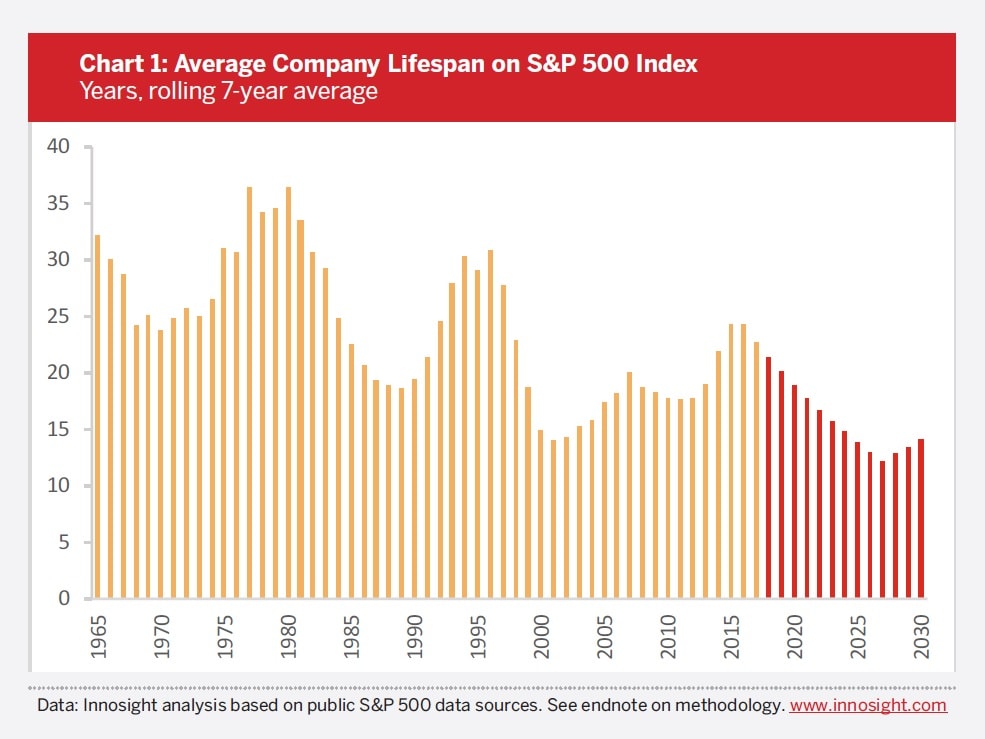Chart of the Week: Company Lifespan on the S&P 500
From Innosight's research on Creative Destruction:
Key insights include:
- The 33-year average tenure of companies on the S&P 500 in 1964 narrowed to 24 years by 2016 and is forecast to shrink to just 12 years by 2027 (Chart 1).
- Record private equity activity, a robust M&A market, and the growth of startups with billion-dollar valuations are leading indicators of future turbulence.
- A gale force warning to leaders: at the current churn rate, about half of S&P 500 companies will be replaced over the next ten years.
- Retailers were especially hit hard by creative destruction, and there are strong signs of restructuring in financial services, healthcare, energy, travel, and real estate.
- The turbulence points to the need for companies to embrace a dual transformation, to focus on changing customer needs, and other strategic interventions.

Questions:
- What is the average lifespan for companies in the S&P500 currently (using a 7 year rolling average)?
- What has the trend been since 1995? Did the average lifespan increase or drop since 1995?
- What might explain what caused the change between 1995 and today?
- Why do you think the authors of this report expect to see the average lifespan continue to drop in the future (red bars)?
- Enrichment: What do you think the term "creative destruction" is used in a report that has this chart as one of the exhibits? If the pace of creative destruction increases, do you think this makes picking individual stocks more or less risky?
----------------
Hone those analytical skills using NGPF's Data Crunches.
About the Author
Tim Ranzetta
Tim's saving habits started at seven when a neighbor with a broken hip gave him a dog walking job. Her recovery, which took almost a year, resulted in Tim getting to know the bank tellers quite well (and accumulating a savings account balance of over $300!). His recent entrepreneurial adventures have included driving a shredding truck, analyzing executive compensation packages for Fortune 500 companies and helping families make better college financing decisions. After volunteering in 2010 to create and teach a personal finance program at Eastside College Prep in East Palo Alto, Tim saw firsthand the impact of an engaging and activity-based curriculum, which inspired him to start a new non-profit, Next Gen Personal Finance.
SEARCH FOR CONTENT
Subscribe to the blog
Join the more than 11,000 teachers who get the NGPF daily blog delivered to their inbox:
MOST POPULAR POSTS










